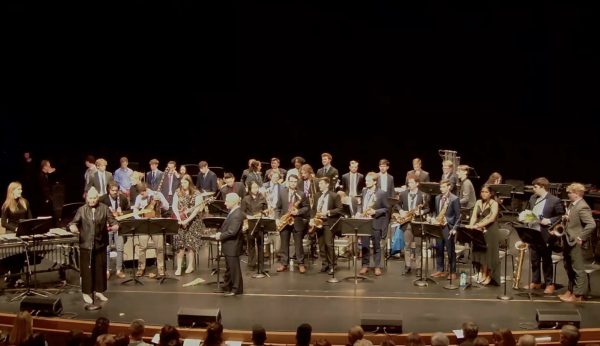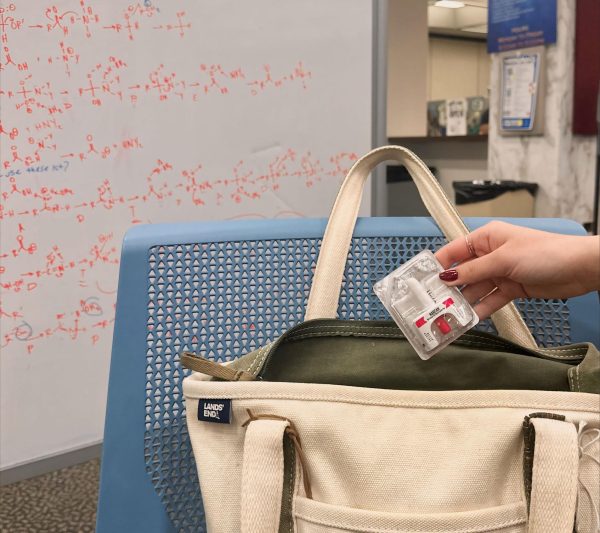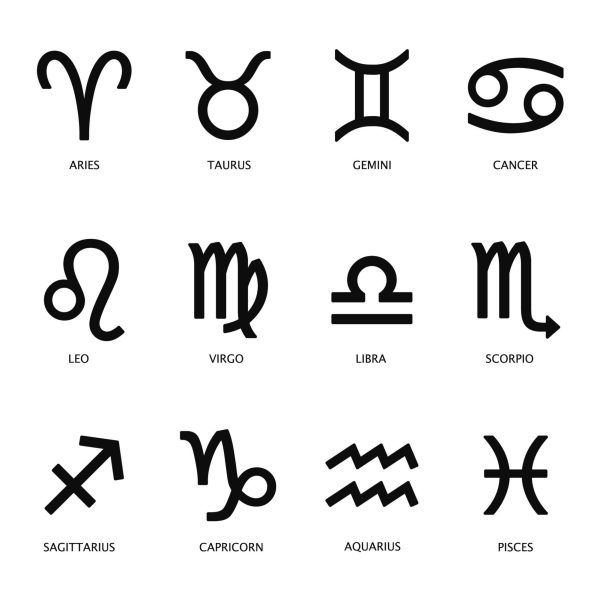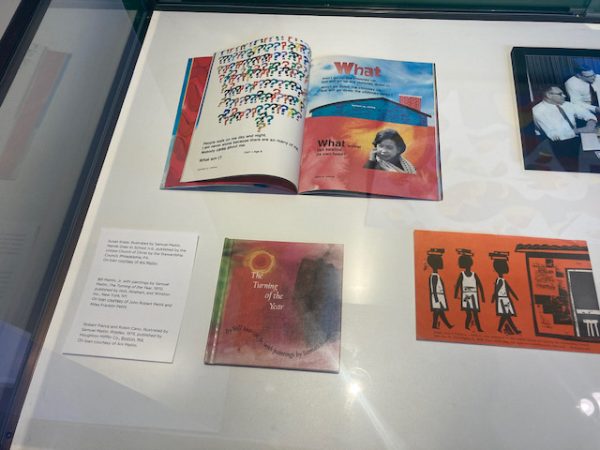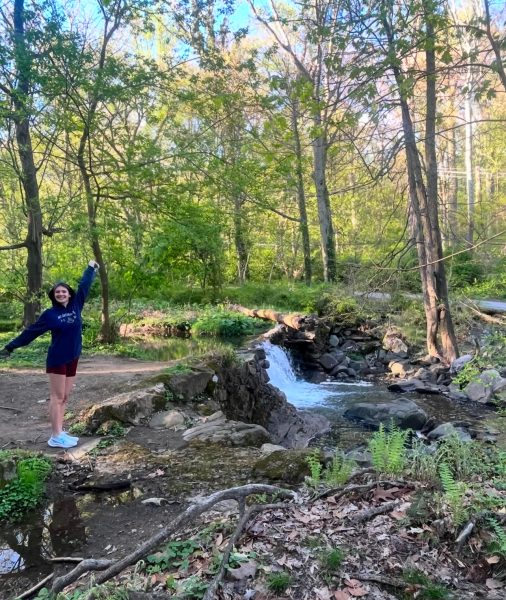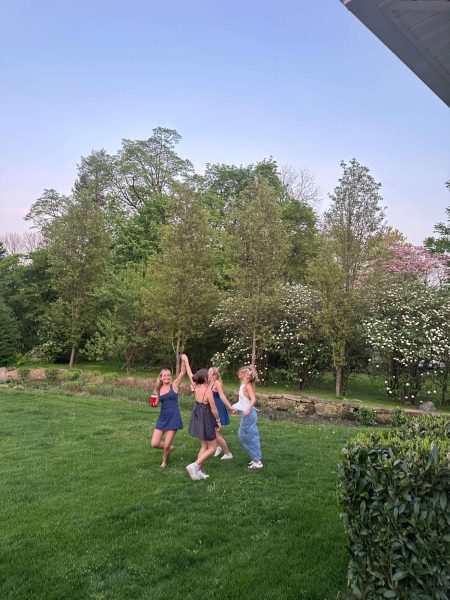Law school life
February 16, 2010
As Maria braced herself to enter the courtroom and face her abuser, who also happened to be the father of her three children, she felt an unfamiliar sense of well-being. She strode in alongside the tall, dark and handsome Derek Hines, whose intimidating stature and marked warmth made her feel both safe and comfortable, even in the harrowing moments before and during her judicial proceeding over spousal support.
Relieved and grateful that she didn’t have to face her abuser alone, Maria had no idea that she, along with countless other clients of the Domestic Violence Legal Clinic in Lancaster, Pa., had left an indelible mark on the then-20-year-old intern.
“I expected it to be a typical undergraduate internship — lots of filing, coffee runs — but given my background in Spanish and the population of Lancaster, I was able to sit in on client meetings, translate for the non-bilingual attorneys and accompany battered women to their judicial proceedings,” Hines says. “It was an experience that really touched me.”
Although he always had an interest in politics and government, it was this internship during the summer after his sophomore year of college that inspired Hines to pursue law after graduating with a double major in government and Spanish.
The timing was good for Hines because, after that summer, he entered his junior year and started to prepare for law school.
Upon returning to school, Hines joined and was inducted into the pre-law honors society at Franklin & Marshall College. From there, he faced the daunting task of studying for the LSAT.
“As much as 80 percent of admissions criteria is based on this test,” Hines says. “Law schools need a way to standardize grades from college to college, so this test carries the brunt of that necessity.”
Of the 7,000 applicants to Villanova School of Law, only four percent of students with GPAs of 3.5 or higher were accepted with LSAT scores on the low end of the spectrum, between 120 and 147, while 100 percent of applicants with the same GPAs were admitted with top scores between 168 and 180, according to applyingtoschool.com.
Hines prepared for the LSAT throughout junior year and took the test in the fall of his senior year. After receiving his scores, he immediately applied to a wide range of law schools up and down the East Coast, as far north as Cornell in upstate New York and as far south as William & Mary in Virginia. But he landed here, at Villanova School of Law, in the fall of 2008.
When he arrived here, Hines was immediately glad he challenged himself with difficult courses during college. Though he initially took them to help get into law school, they ultimately prepared him for the challenges of the coursework that lay ahead.
Many of his peers went into the workforce before heading to law school, and he notes that the discipline of a nine-to-five lifestyle was beneficial for many of them.
At 23, Hines feels young among his classmates, who for the most part range in age from 24 all the way up to mid-60s.
Each of Hines’ classes, which this year include constitutional law, federal tax, business organizations and law and literature, has about 75 students.
“The bar is higher at law school,” Hines says. “The smartest kids in your undergrad classes — all the students are now those kids.”
There are no majors or concentrations in law school, and after passing the bar exam, an attorney is licensed to practice any type of law. However, an employer might be more apt to hire a graduate applying for a specific type of law position if his or her transcript indicates that the applicant has taken relevant courses during law school.
“From the first day of your first 1L class, you’re preparing for the final for that class,” Hines says. “Classes are taught with the Socratic method, meaning the professor calls on you until you get something wrong. So if for no other reason than not wanting to look like an idiot, you always have to be on your toes.”
All the legalese doesn’t just come naturally, though.
“It takes a while to read a case your first year,” Hines says. “But I read cases in one-fifth of the time now.”
On a weekday, Hines wakes up at 8 a.m. to go for a run and have a quick breakfast before heading to the library for an hour and a half to do some additional preparation for class that day, which begins at 10:30 a.m. for 2L’s. After going to class all day, he goes back to the library until dinnertime, grabs a quick dinner and heads back to the library to do two or three more hours of work before trying to get a little pickup basketball in late at night.
“I push myself during the week so that I have more free time on weekends,” Hines says.
There is also a curve in place in each class, so in order for someone to earn an ‘A,’ someone else in the class must get a ‘D.’
The top 10 percent of the class, which is a group that includes Hines, puts together the Villanova Law Review.
“It’s a lot of extra work,” Hines says. “You do a lot of writing for classes in general, but for the Law Review alone, I recently wrote a 54-page single spaced article.”
With all that work and only 24 hours in a day, it is a virtually insurmountable task to succeed in your classes with a job on top of your course responsibilities.
Yet private school tuition and fees are $26,000 to $37,000 per year, excluding the cost of books and living expenses, according to CollegeAnswer.com, a Web site affiliated with SLM Corporation. And Villanova School of Law is on the higher end of the private school tuition spectrum. So how is one to pay for the price tag attached to the new law school building?
Federal loans, such as Stafford and Perkins loans, are guaranteed by the U.S. government under the Federal Family Education Loan Program, according to CollegeAnswer.com. Private loans are also an option.
Hines defrayed the costs of law school by working as a resident assistant his first year and continues to do so as head resident assistant for St. Mary’s Hall this year.
“I have a room and meal plan, but it’s not just a financial relief,” Hines says. “It also gives me a meaningful connection to the campus, which many law students who simply drive to and from classes here miss out on.”
Teaching assistant positions are another option, and the tuition of public law schools might be much more appealing, ranging from $6,000 to $13,000 per year, according to CollegeAnswer.com.
In the end, it shouldn’t be too difficult for most law school graduates to pay back their loans, with the most competitive firms paying recent graduates six figure salaries.
Paul, Hastings, Janofsky & Walker, LLP, a law firm in New York City, offers a base salary of $160,000 for first-year employees, with their employees taking home base salaries of $280,000 after eight years, according to FindLaw’s infirmation.com, which collects salary information from a variety of sources. Bonuses on top of the base salaries are in the tens of thousands of dollars.
“People graduating this year have it really tough, though, since a lot of firms have laid off associates and are not hiring new ones,” Hines says. “Clients aren’t hiring attorneys, so the legal field has been directly affected by the market dip.”
The hope, Hines says, is that in the next three years, the market for new attorneys will be on the rebound.
“The summer after 1L, your job is more about the experience than money,” Hines says. “But the job you secure after in your second summer often leads to an offer after your third.”
Lucky for Hines, the job he has secured for the summer after his second year is with Pepper Hamilton, a top-three firm in Philadelphia that handles big businesses and has a strong commercial background.


